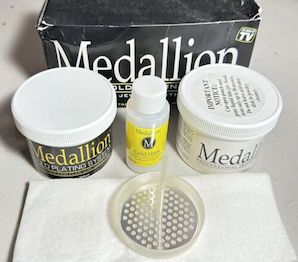
Curated with aloha by
Ted Mooney, P.E. RET

The authoritative public forum
for Metal Finishing 1989-2025

-----
Immersion gold or electroless gold plating on silicon on CYTOP
Q. Hi,
I am trying to do electroless gold plating on silicon wafers over which Cytop have been spin coated and then patterned using lithography. I want to find whether the gold gets plated on silicon or on the Cytop? And I want to know do I need to have a seed layer for the electroless gold plating, or do I need immersion gold solution?
Thanking you,
University of South Florida Tampa, Florida
2002
A. Sorry, Rahul, but I am not very familiar with depositing gold onto Cytop, so I can't help you much on that. But I can clarify what is involved in immersion gold plating vs. electroless gold plating, which I hope may be of at least a little assistance.
"Immersion gold plating" works by a replacement reaction where the substrate metal dissolves into solution in exchange for metal from the plating solution plating out onto the substrate. The familiar copper plating layer that chemistry students see deposit onto iron nails when they are placed in copper sulphate ⇦ this on eBay or Amazon [affil links] is an immersion plating; as is the deposition of silver onto copper when it's placed in silver nitrate ⇦ this on eBay or Amazon [affil links] . These reactions can only proceed when the metal you wish to plate onto the substrate is more noble than the substrate. Batteries derive their electrical power from the immersion plating reaction that occurs.
"Electroless gold plating", also called "auto-catalytic gold plating" is sort of a "spring loaded" reaction. The plating solution contains both the dissolved metal and a reducing agent, waiting for the appearance of a catalyst to trigger the reducing agent to convert the dissolved metal to metal. "Auto-catalytic" means that gold is one of the catalysts that will trigger the reaction.
One of the advantages of electroless plating is that the deposits can be much thicker because there is no essential limit on how long the auto catalytic reaction can continue whereas, in immersion plating, once the substrate has an extremely thin coating coating on it, with no more substrate metal exposed, the "battery" is dead and the plating stops. In either case, a metal seed layer can be used. There is an autocatalytic nickel solution that can deposit directly onto silicon; I'm not sure if there are any commercially available autocatalytic gold solutions that can deposit directly on silicon without a seed layer. The suppliers of plating processes can help you with this information. Good luck.

Ted Mooney, P.E.
Striving to live Aloha
finishing.com - Pine Beach, New Jersey
2002
A. Like conventional fluoropolymers, CYTOP is very Hydrophobic (repels water and water based chemicals like gold plating solutions), this means that the surface must be treated permanently with a hydrophilic coating or momentarily by a strong wetting agent before any plating can be done. The gold will be plated to the CYTOP coating not the silicon underneath. I would think that to coat this type of wafers a catalyzed gold solution would be best as opposed to autocatalytic . Or an immersion gold plating (galvanic action) where silver has been plated before.
Marvin Sevilla- Managua, Nicaragua
January 14, 2016
Q. I'm trying an autocatalytic Au deposition formula by Ali and Christie (GoldBull., 1984, 17, (4)), but my results suggest that this is an immersion process. Do you know of an autocatalytic process that would allow coating thicknesses to 60 µm (substrate is Cu)?
Thomas BunnLLNL - Livermore, California, US
March 27, 2018
A. Hi Thomas. I'm confident that Technic (and perhaps others) have true autocatalytic gold plating processes, but I don't personally know about any generic ones.
The last responder above, Marvin Sevilla, has made some very interesting observations on topic 1321 about gold plating with the "activating disk" plating solutions -- finding them to be rather like autocatalytic plating in their potential for thick plating rather than being limited like immersion gold. So that could be a possibility as well. Good luck.
Regards,

Ted Mooney, P.E. RET
Striving to live Aloha
finishing.com - Pine Beach, New Jersey
Q, A, or Comment on THIS thread -or- Start a NEW Thread
